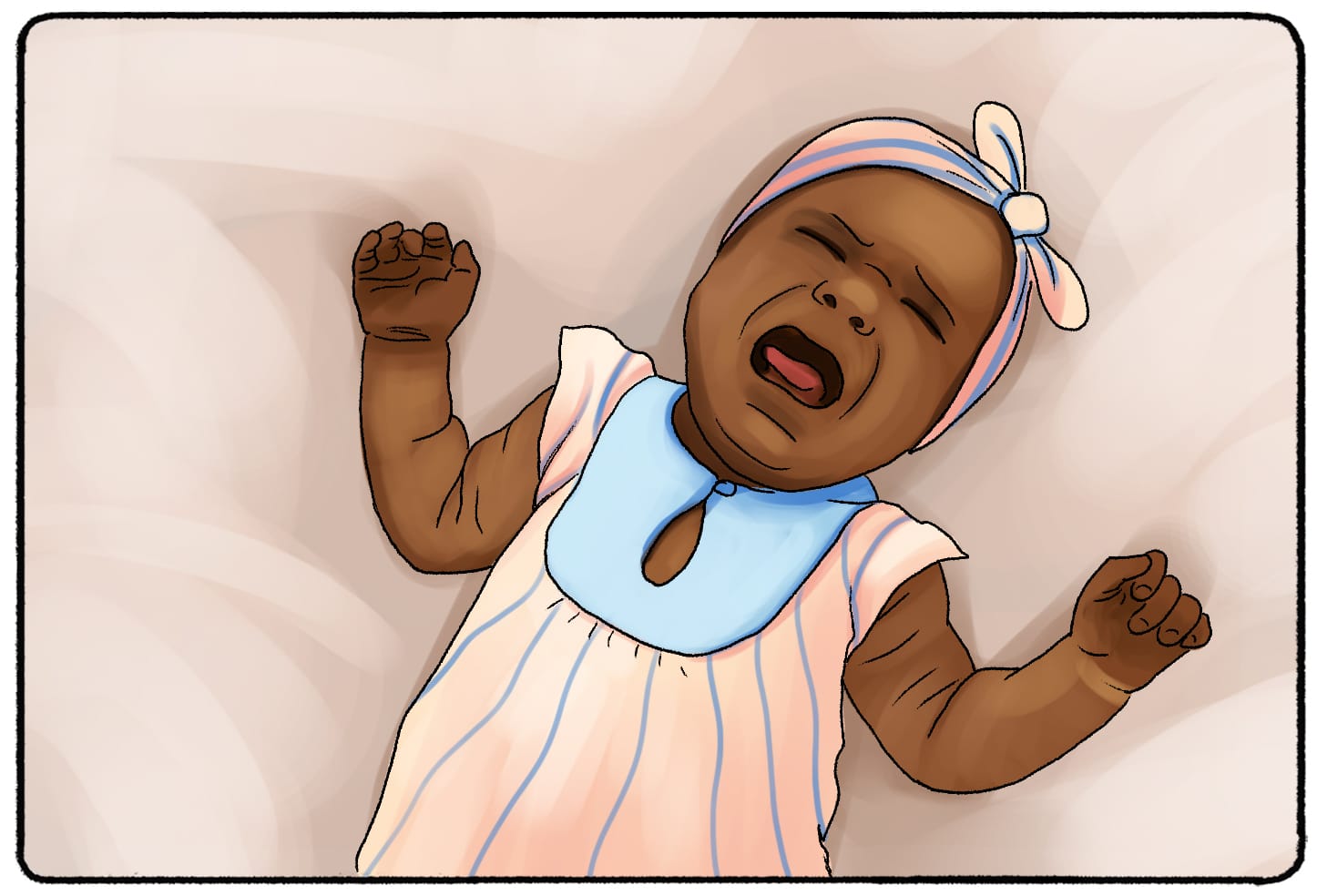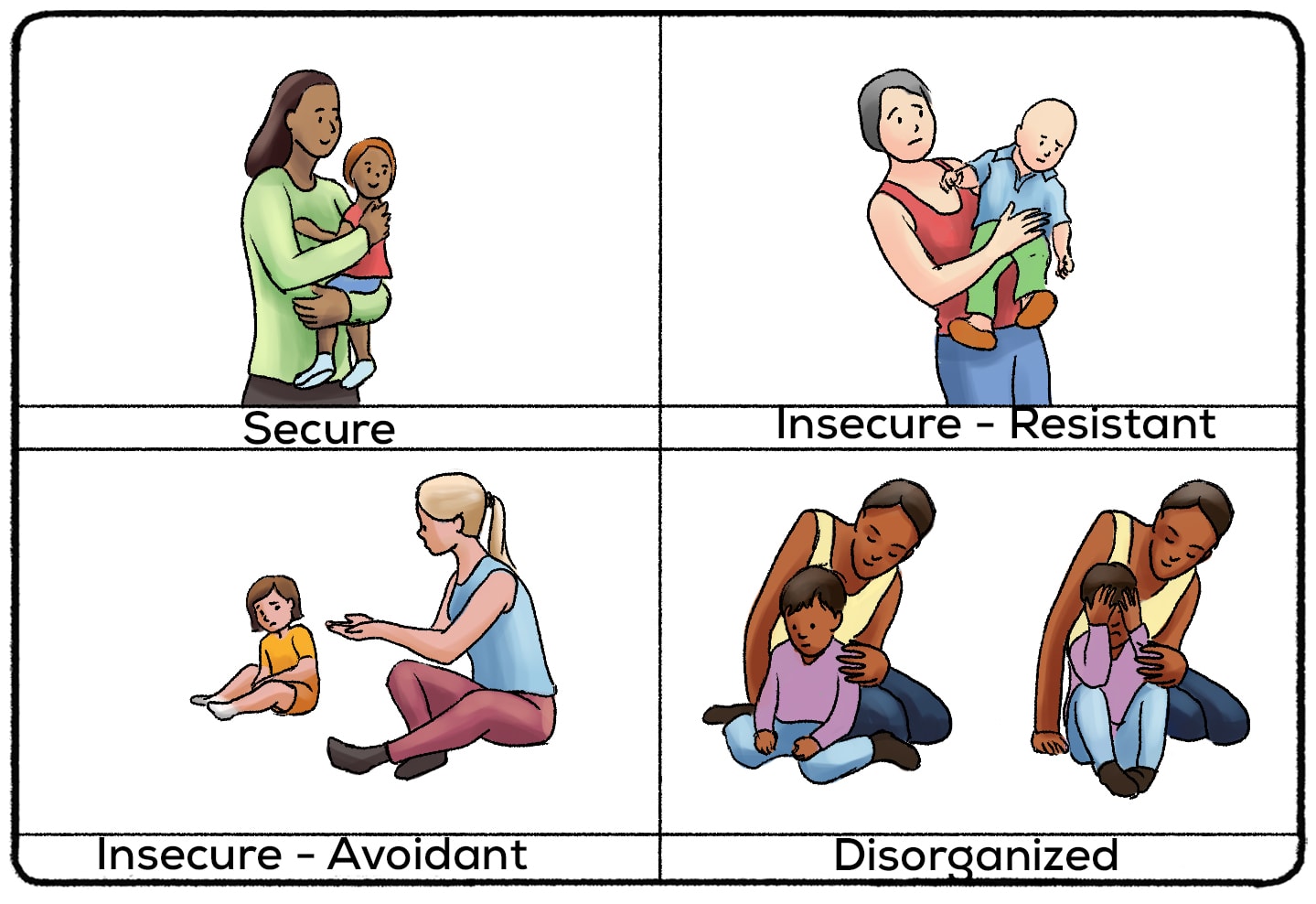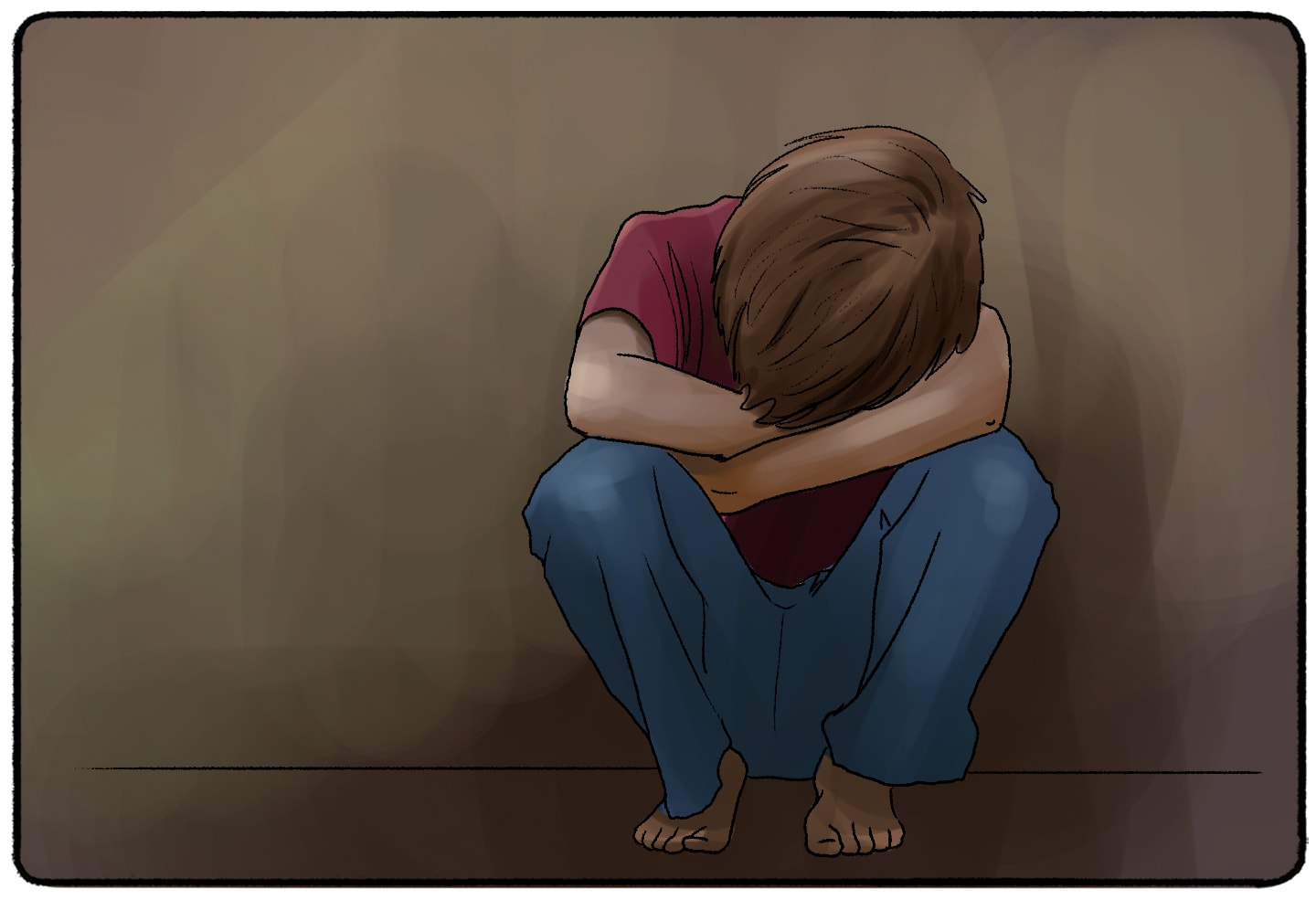Erik Erikson’s work with psychosocial development has broken down the different stages of social interaction and how they affect a child’s personality, outlook, and virtues. That crucial first stage of psychosocial development can impact your life past infancy or adolescence.
What Is Trust Vs. Mistrust?
The first stage of Erik Erikson’s Psychosocial Development is Stage 1, where the child goes through a psychological crisis of "trust vs. mistrust." They must rely on the mother for their needs; the mother's response determines whether the child develops trust or mistrust.
This care and attentiveness must be consistent to build trust. If an infant gets some care from their mother but cannot rely on consistent care, mistrust and anxiety will still form. With consistent care, the child will also develop hope.
Trust vs. Mistrust Age
This stage starts as soon as a child is born and lasts until the child is 18 months old.
Basic Example of Trust vs. Mistrust
Let’s say a mother feeds her baby in the morning. The next time the child is hungry, they will cry, hoping the mother will hear the cry and feed the child again. Trust will grow stronger if the mother fulfills the child’s needs. If the mother fails to feed the child, their hopes will be dashed, and mistrust may form. We can quickly feel lost or helpless when we cannot hold onto hope.

This hope and trust become a foundation for the developing child. In the second and third stages of psychosocial development, the child has more opportunities to branch out and take control of their decisions and actions. Without a trusting parent or guardian, it can be harder for the child to make these decisions and branch out further.
Examples
Here are some examples that illustrate behaviors, experiences, and outcomes related to this stage:
Trust Development:
- Consistent Feeding: An infant is fed regularly and doesn't go hungry.
- Warm Embraces: The child is held and cuddled often.
- Responsive Care: When the baby cries, a caregiver responds promptly.
- Predictable Routine: The child has a consistent sleeping and feeding schedule.
- Safe Environment: The baby's surroundings are safe and free from potential harm.
- Playful Interactions: Caregivers play peek-a-boo, sing lullabies, and engage in other playful activities with the baby.
- Consistent Caregivers: The baby sees familiar faces regularly and forms attachments.
- Physical Comfort: The baby's diaper is changed promptly and kept clean and comfortable.
- Verbal Reassurance: The caregiver uses soothing tones and words to calm the baby.
- Meeting Emotional Needs: The caregiver provides comfort when the baby is scared or upset.
- Exploration Encouragement: The baby can explore their environment, knowing a caregiver is nearby for safety.
Mistrust Development:
- Neglect: The baby's basic needs, such as hunger or comfort, are often ignored.
- Inconsistent Care: The baby's feeding and sleeping schedule is unpredictable.
- Frequent Caregiver Changes: The baby sees a revolving door of unfamiliar faces.
- Lack of Physical Comfort: The baby is often left in a wet diaper or uncomfortable clothing.
- Absence of Play: The baby has little to no playful or stimulating interactions.
- Harsh Environment: The baby is exposed to loud noises, bright lights, or other stressors without comfort.
- Emotional Unavailability: The caregiver is emotionally distant or unresponsive to the baby's cues.
- Physical Danger: The baby's environment is unsafe, with potential hazards.
- Lack of Response: The baby cries for extended periods without anyone coming to help.
- Rejection: The baby is pushed away or ignored when seeking comfort or attention.
- Inconsistent Reactions: The caregiver's reactions to the baby's behaviors are unpredictable, sometimes nurturing, neglectful, or harsh.
Are Trust Issues Normal?
It’s not abnormal for a child to go through the trust vs. mistrust stage without fully establishing trust with their parents. Most of the time, it’s not the child’s “fault” anyway! A child cries and tries to communicate its needs with its limited abilities. The child may develop trust issues if the parent cannot fulfill those needs.
Trust issues can easily carry on until adulthood and may also be influenced by other factors. A person who experiences infidelity may have a hard time trusting future partners. Someone who was fired from a job suddenly may not feel comfortable as they seek out another job. Bad things happen to all of us, and reacting to those situations by trying to prevent them in the future is normal. The thoughts we experience when we have trust issues may be a defense mechanism. It is normal to want to protect yourself, so it is normal to experience trust issues when that protection is threatened.
Trust issues go beyond romantic relationships. A person who has not established trust with their parents or whose trust has been broken may not trust anyone. Educators, scientists, fellow citizens, etc. In recent surveys, most Americans say they can trust…that trust for others has worsened and is causing a lot of interpersonal conflicts within the country!
Trust vs. Mistrust in Adulthood
Although Erikson outlined the psychosocial stages of development into neat and clean stages, they can have an effect on each other. A child does not just forget their trust issues when they turn 18 months old - their interests shift as they explore the conflict of autonomy vs. shame and doubt.
Erikson went so far as to suggest that if a child does not learn to trust in the first 18 months, all areas of their life will be impacted. Think about it. Our relationships, and the trust we put in them, impact many of our decisions. Would you travel the world if you didn’t trust the people who lived in it? Could you network effectively if you didn’t trust people to help you in the ways that you could help them? Adults can find ways to re-establish trust that they might not have learned in their infancy, but it is entirely possible that they will have to take those steps.
If you have ever been in a relationship after being cheated on, you know the impact that mistrust can have.
Lasting Impacts of Lack of Trust
Psychologists who have studied trust vs. mistrust suggest that not only is this stage important, but it also has lasting implications. Research associates a lack of trust with:
- Criminal and delinquent behaviors
- Social disengagement
- Irresponsibility
- Loneliness
- Peer rejection
- Depression
- Lower self-perceived social acceptance
- Lower peer-rated social preference
These are significant issues that can be solved by more attentiveness in infancy!
Similarly, psychologists like Mary Ainsworth pointed to the relationships and trust established in infancy when discussing adult relationships. Yes, your trust issues with your partner may be traced back to your needs not being met as a child. At least, that’s what attachment theory suggests.
Attachment Styles and Trust
The foundational trust developed during the earliest stage of life can leave lasting impressions, influencing how we relate to others throughout our lifespan.
While Erik Erikson extensively delved into psychosocial development, other psychologists, notably John Bowlby and Mary Ainsworth, were also influenced by Freudian theories. They pioneered the concept of "attachment theory," which describes the deep emotional bond between a child and their primary caregiver and its subsequent impact on their social and emotional development into adulthood.
Bowlby and Ainsworth identified various attachment styles that originate in childhood and influence interpersonal dynamics in adulthood. These styles provide insights into patterns of relating to romantic partners, friends, and even new acquaintances.

These four styles either fall under “secure” or “insecure.”
Secure Attachment Style
Individuals with a secure attachment style generally have a positive view of themselves and others. This style typically develops from consistent caregiving, where the child's needs are regularly met, and they are assured of their caregiver's reliability. As adults, these individuals tend to be comfortable with intimacy and independence, balancing both well in relationships. They're often expressive about their feelings and are not overly anxious or avoidant of close relationships.
Insecure Attachment Style
Insecure attachment patterns emerge when early childhood needs are inconsistently met, leading to mistrust. Three primary styles fall under this category:
- Avoidant Attachment Style: Individuals with this style often appear dismissive and tend to distance themselves from their partners. They may prioritize their independence and self-sufficiency and hesitate to become too close or dependent on someone else. This avoidance often stems from experiences of rejection or neglect during childhood.
- Anxious Attachment Style: People with an anxious attachment style crave closeness but remain constantly vigilant and insecure about potential rejection or abandonment. They often seek validation and reassurance from their partners and can be described as "clingy" or "needy." This attachment style can result from inconsistent caregiving, where the child is uncertain if their needs will be met.
- Disorganized Attachment Style: Also referred to as fearful-avoidant, individuals with this style exhibit an unpredictable mix of anxious and avoidant behaviors. They deeply desire closeness but are intensely afraid of getting hurt, leading to puzzling push-pull behavior. This attachment style often arises from traumatic or chaotic childhoods where the caregiver was a source of comfort and fear.
Reddit user mahanahan shared their essay on how Barney from How I Met Your Mother may have developed mistrust and an insecure attachment style as a young child. The pop culture reference to Barney from "How I Met Your Mother" illustrates how early developmental challenges can shape relational patterns in adulthood.
Barney's struggles with trust and commitment in the series can be traced back to potential early attachment disruptions. Recognizing and understanding these attachment styles underscores the profound impact of early experiences on lifelong relational dynamics and the significance of fostering secure attachments in childhood.
More Examples of Trust vs. Mistrust
Sometimes, mistrust is developed when a parent fails to meet their child’s needs despite their best intentions. Maybe the parent is stressed out from caring for multiple children, away from home due to a hectic job schedule, or does not feel confident in their child-rearing abilities. This is completely normal, as parents often live demanding lives! (Not every country or job supports paid maternity or paternity leave!)
But there are also examples of trust vs. mistrust that are downright cruel. Neglecting or abusing a child can certainly lead to a life of not only mistrust but also underdevelopment.
Feral Children
In the 1940s, the heart-wrenching tales of two feral children, Anna and Isabelle, emerged and left an indelible mark on the world of psychology. Born just a month apart, the details of their tragic early lives surfaced within nine months of each other, offering researchers a rare, albeit deeply distressing, insight into the consequences of extreme social deprivation.
Anna, from Pennsylvania, lived an isolated life confined to the attic of her family's home. On the other hand, Isabelle's confinement in Ohio was in a dark room, her only contact being her deaf-mute mother, who couldn't communicate normally with her.
By the time they were discovered at the age of 6, the ramifications of their isolation were evident. Both exhibited severe developmental delays, particularly in linguistic capacities, profound mistrust, and numerous health complications. Their lack of foundational social interactions and emotional bonds during their formative years had stunted their growth in almost every facet of human development.
Anna's life was cut short when she succumbed to jaundice at 10. Despite dedicated efforts by psychologists to accelerate her developmental progress, she remained with a toddler's linguistic and social capabilities at her passing.
Isabelle, in contrast, experienced some recovery after her rescue, thanks to intensive therapeutic interventions. Over time, she made substantial progress in various areas of development, particularly in language acquisition, highlighting the resilience of the human spirit and the potential for recovery when given appropriate care and attention.
The tragic stories of Anna and Isabelle significantly impacted the study of developmental psychology. They underscored the critical importance of early socialization and emotional bonds in the comprehensive development of a child. While their extreme cases serve as a grim reminder that even in less severe circumstances, a lack of nurturing interactions in early childhood can lead to long-term emotional and cognitive consequences, such as anxiety, mistrust, and difficulties in social adaptation.
Ethical Considerations: It's paramount to approach such sensitive cases with utmost care and respect. Studying instances of severe neglect, like those of Anna and Isabelle, offers invaluable insights. However, the primary focus must always remain on the well-being and dignity of the individuals involved. Their stories should be shared with empathy, ensuring their experiences are not sensationalized. Furthermore, while their experiences provide invaluable data, the priority should always be rehabilitating such individuals rather than merely studying them.
These cases remind us of our responsibilities as researchers and as a society to protect and nurture our most vulnerable members.
Genie is another example of a child who grew up in traumatic living conditions due to neglect.

Can Trust vs. Mistrust Be Resolved?
We know that Anna’s story is tragic. Fortunately, while Isabelle struggled to catch up, she did manage to catch up with her peers within three years. If a child goes through this first stage and develops mistrust, there is still hope for them to have a thriving social life and healthy relationships. Sure, there will be a delay, but with proper therapy, education, and relationships moving forward, it’s possible to “catch up” and enter into later stages in Erik Erikson's Stages of Psychosocial Development with hope and trust.
How to Resolve Trust Issues As an Adult
Mistrust developed as an infant can affect a person for the rest of their lives, but it does not have to. Reading and understanding the theories behind trust issues and insecure attachment can be a great first step to resolving these feelings. You may have to trust someone to resolve these issues, but that is all part of the process!
Practice mindfulness.
Before having conversations with your partner or taking risks, sit with yourself and be mindful. What thoughts are causing you to feel anxious or nervous? How does this lack of trust feel in your body? As you become more aware of how you talk to yourself, you may find that you can change the conversation and reassure yourself to a place of deeper trust.
Communicate with your partner and friends.
With the knowledge of your trust issues, talk to friends, family, and your partner about how these trust issues make you feel. This is a risk in itself, but it will pay off. Open and honest communication will help put everyone on the same page. You may find that your friends, family, or partner are unaware of these trust issues. They can use this information to adjust how they communicate or behave with you to build trust more effectively.
Reach out to a mental health professional.
You do not have to go through this process alone. A certified mental health professional can walk you through the beliefs and experiences surrounding your trust issues. Many therapists use an approach based on the ideas of Erikson, Ainsworth, and other psychologists who studied attachment theory and trust issues. Consider asking possible therapists for a 15-minute consultation in which you can establish trust and decide if this is the right professional for you.
